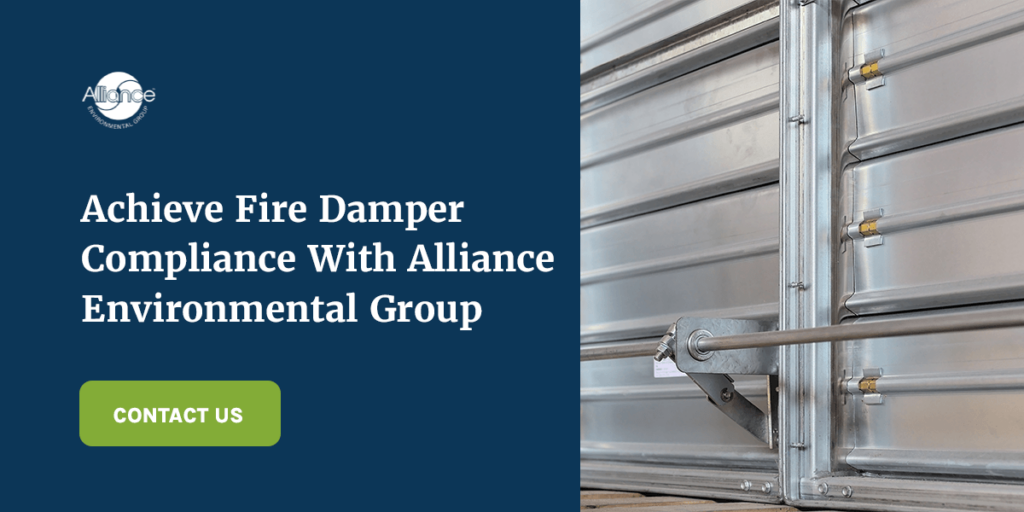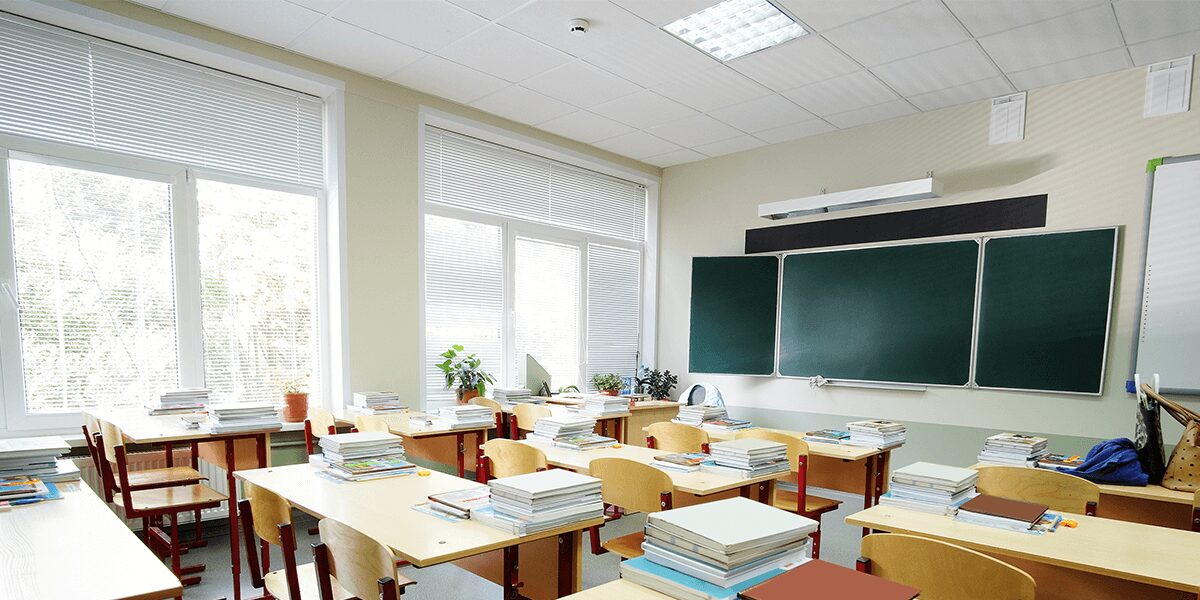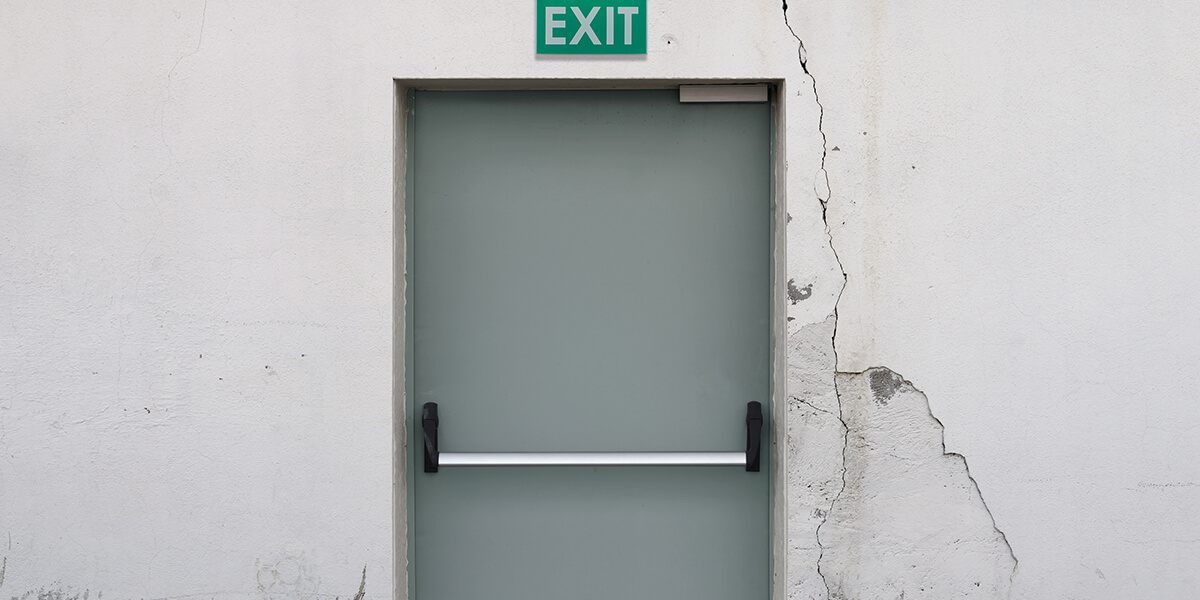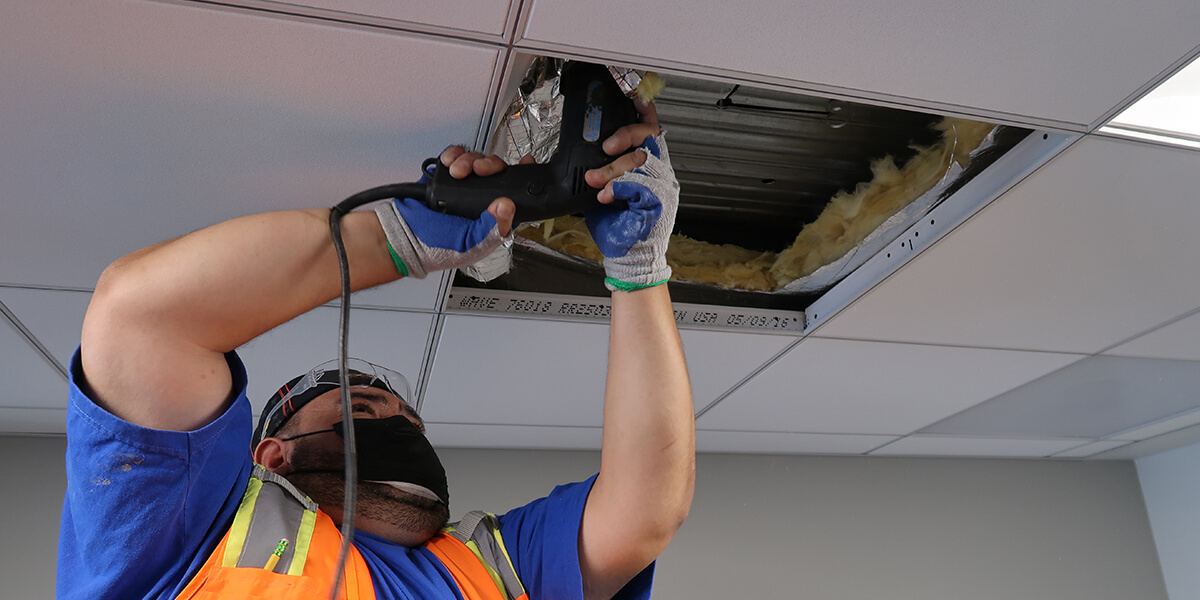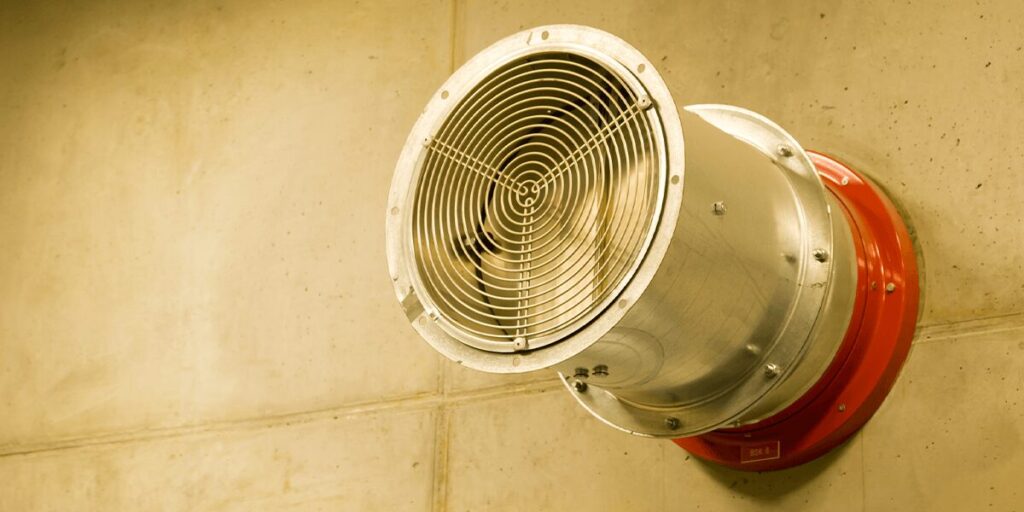
Fire dampers, also called fire shutters, are critical to building safety. Even if your building has fire-resistant doors or other barriers, flames can overcome these materials if they can pass from room to room through ducts. Fire dampers help prevent and isolate the spread of fire, closing off duct access as soon as they detect heat. This makes fires easier to extinguish and keeps smoke from spreading.
Due to their importance, the National Fire Protection Association (NFPA) enforces strict requirements on fire dampers to ensure they operate when required under fire conditions. It’s important that you understand these requirements to meet compliance and safeguard your occupants and assets from fire hazards.
How Do Fire Dampers Work?
Fire dampers are engineered to close automatically upon heat detection, interrupting airflow and restricting flames from passing through a building’s ductwork. Under severe fire exposure, a duct can collapse or deform, creating an opening in the fire barrier. Here’s how fire dampers work to protect these openings:
- Temperatures reach a specific point and the damper reacts
- The sensors on the dampers activate, moving actuators to the safety position
- The fusible link on the damper melts, causing the damper doors to automatically close
Importance of Fire Damper Compliance
Studies show most fire deaths are caused by smoke inhalation rather than burns. Most victims are not located in the same room as the fire’s origin. By meeting fire damper compliance, you help ensure this equipment does its job isolating fires and dangerous fumes and smoke from spreading throughout your building’s ductwork and endangering occupants.
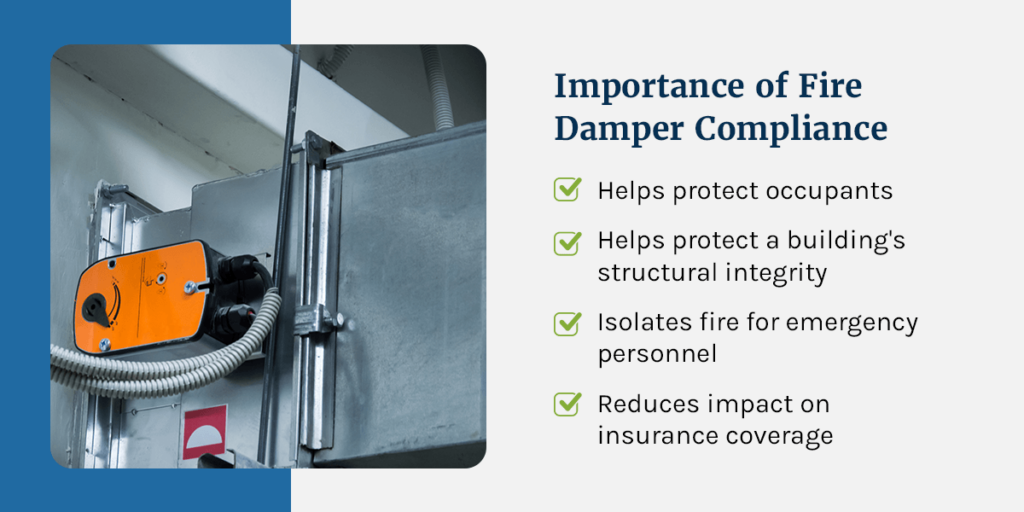
Meeting fire damper compliance:
- Helps protect occupants: Properly functioning fire dampers isolate fires and smoke, giving you time to evacuate all occupants in your building in a fire emergency. This can help reduce the risks of fire-related hazards and save lives.
- Helps protect a building’s structural integrity: Properly functioning fire dampers help protect the structural integrity of your building, saving you in building repairs while helping you keep your business running with minimal downtime.
- Isolates fire for emergency personnel: Properly functioning fire dampers help isolate fires so emergency personnel can more easily enter buildings and extinguish fires.
- Reduces impact on insurance coverage: Fires also impact insurance premiums and claims. Insurance companies often require proof of damper testing, and following fire damper compliance regulations can help you provide that proof if necessary.
Fire dampers must meet compliance to ensure they work correctly and protect people from fire. Incorrectly installing them or forgoing maintenance can put lives at risk. Consequences of fire damper non-compliance can include civil liability and fines.
Fire Damper Regulations and Standards
NFPA 80 documents fire damper regulations and standards, which include requirements for fire damper inspection, testing and maintenance. It’s essential to review these guidelines and use them as a basis for your facility. Working with a professional team can help you become and stay compliant, considering many standards might be complex and time-consuming to follow.
NFPA fire damper requirements include:
Operational Test
An operational test must be performed to meet fire damper installation requirements. This is typically done by the installation personnel, and will confirm the following:
- The damper fully closes.
- The damper is free of obstructions that may impact its operation.
- There is full, unobstructed access to the damper.
- All indicating devices and sensors are working and reporting correctly.
- For velocity dampers, the velocity within the duct is within the velocity rating of the damper.
- The fusible link, if equipped, is at the correct temperature classification and rating.
Acceptance Testing
Following an operational test, an acceptance test is required before properly placing the entire fire damper system in service. The acceptance test will confirm the following:
- The damper isn’t damaged, defective or missing any parts.
- The dampers close fully after disconnecting electrical power or air pressure when actuated.
- The dampers fully reopen when air pressure or electrical power is reapplied when actuated.
- The damper closes after removing the fusible link and manually resetting it to the full-open position when non-actuated.
The acceptance test should be performed only when the HVAC system is at maximum airflow, unless testing is being performed on dampers fitted with fusible links. In that case, it is permissable to turn the fan in the system off.
Periodic Testing
The NFPA 105 requires that fire and smoke dampers be inspected and tested one year after the acceptance test and then every four years. The only exception is fire dampers in hospitals, which must be inspected and tested every six years.
A periodic inspection of an actuated fire damper must confirm the following:
- The damper is in the full-open or full-closed position as required by the design.
- The damper moves to a full-closed or full-open position when commanded.
- The damper returns to its original operating position as required by the design.
For non-actuated fire dampers, the following must be confirmed:
- The fusible link is not painted.
- The damper fully closes upon removing the fusible link or activated with the damper in full-open position.
- The damper latches in full-closed position.
- The damper returns to a full-open or operational position with the fusible link installed.
Fire Damper Maintenance and Best Practices
As a building owner, it’s critical to follow best practices to meet fire damper compliance and ensure facility safety:
- Regular inspections: Schedule regular inspections of all fire dampers in your building. These inspections should only be conducted by qualified professionals to ensure dampers work correctly.
- Documentation: It’s important to keep detailed records of all inspections, tests and maintenance activities for each fire damper in your building. This helps you demonstrate compliance during audits or inspections.
- Training: Provide training for all maintenance staff within your building about damper compliance, including how to operate them and recognize signs of damper issues. Ensure everyone knows the importance of keeping clear access to fire dampers and the consequences of tampering with them. Outline emergency procedures related to fire dampers, as well.
- Timely repairs: You must address all issues promptly. If professionals find a detective part or determine your damper to be non-compliant during an inspection, carry out repairs or replacements as soon as possible.
- Partner with professionals: Certain fire damper regulations can be complex and tough to follow. They can also be time-consuming and make it difficult to manage other aspects of your building. Partnering with professionals can help you stay compliant, as they will assess your fire damper systems regularly, provide recommendations and assist in maintenance, testing and documenting procedures.
By following these best practices, facility owners can enhance their fire damper compliance efforts and foster a safer environment for all occupants.
Achieve Fire Damper Compliance With Alliance Environmental Group
Fire dampers are critical for facility safety, protecting your ductwork from spreading dangerous fires and smoke. As a result, you must have your fire dampers regularly inspected and maintained to meet compliance and ensure they work properly.
Partner with Alliance Environmental to verify that your fire damper installation complies with NFPA standards. Our qualified professionals will come to your building to perform operational, acceptance and periodic testing of your fire dampers, making sure they work correctly to safeguard your building. We also conduct other fire safety services like fire door inspections and repairs, fire sprinkler head cleaning and fire barrier surveys.
Don’t compromise on the safety of your building. Contact us for professional fire damper services today.
